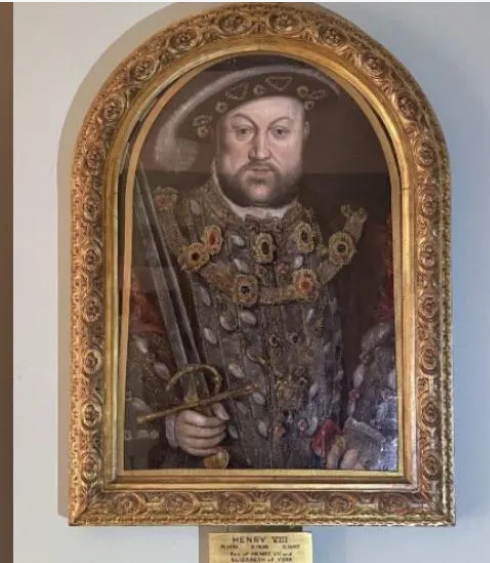
A post on X spotted randomly by an art historian has led to a portrait of King Henry VIII – hanging in a West Midland council hall – to be identified as a famous missing artwork.
Adam Busiakiewicz, who works as a consultant for famous auction house Sotheby’s, said that when he saw a photo of the work hanging in the Shire Hall, Warwick, it “just stood out to me”.
After inspecting it personally to test his theory, he confirmed the artwork was created for tapestry maker Ralph Sheldon and dated back to the 1590s.
It was one of a collection of 22 portraits made for Sheldon, but the whereabouts of only a handful were known.
“The fact I was lucky to piece together [what it was] in an hour is very exciting,” said Mr Busiakiewicz.
The post on X that caught his eye was from the Warwickshire Lieutenancy. The account had shared an image of a reception at the Shire Hall, with the portrait visible – just about – in the background.
“I spend a lot of time thinking about paintings and looking at people’s walls,” he explained.
The Warwick-born, London-based historian then alerted the local authority to what he suspected it had in its building, with Warwickshire County Council inviting him to take a look, which he did with the aid of a stepladder.
Warwickshire County Council said that since the discovery, the artwork had been moved to its Museum Collections Centre for further research.
Mr Busiakiewicz described the piece as a “striking portrait” of one of England’s most famous kings.
The missing work’s journey is not fully clear, but Sheldon’s portraits hung at Weston House in Long Compton, Warwickshire, before being sold at auction, with the location of the majority unknown to this day.
As for value, Mr Busiakiewicz could not say, but added other Sheldon pieces had sold for about £200,000.
Mr Busiakiewicz said that people around the world loved the Tudors and hoped the portrait would be put on display for people to enjoy.
“I hope the portrait will be more admired, it’s Warwickshire’s most famous image,” he added.
Warwick historian Aaron Manning, who helped Mr Busiakiewicz with the research, said it was a really important addition to the town’s already rich history.







